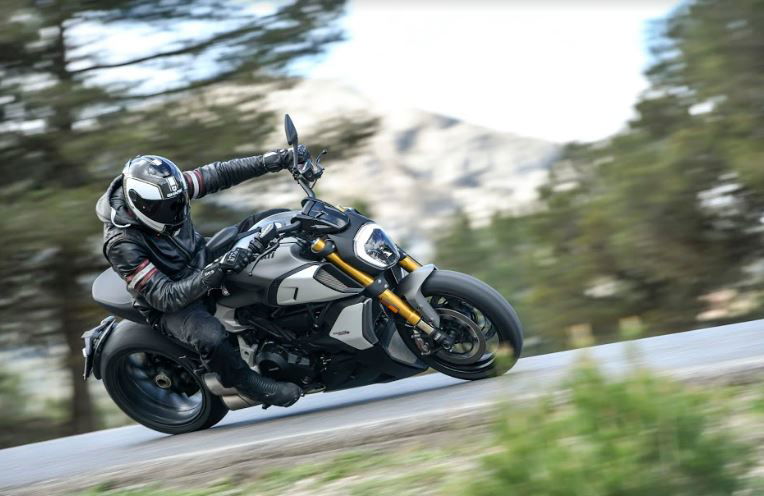2019 Ducati Hypermotard 950 & 950 SP - first ride
More power, less weight, added lunacy for Ducati’s wild child…

THERE’S A certain school of thought that says bikes are getting a wee bit duller these days. You’ll have seen it on the interwebs I’m sure – the growth of rider aids, better tyres and superb chassis designs means bikes are too easy to ride, no skill required, sanitised experiences, blah blah. Give us carburettors, Michelin Hi-sports and 130bhp and we’ll have more fun goes the argument.
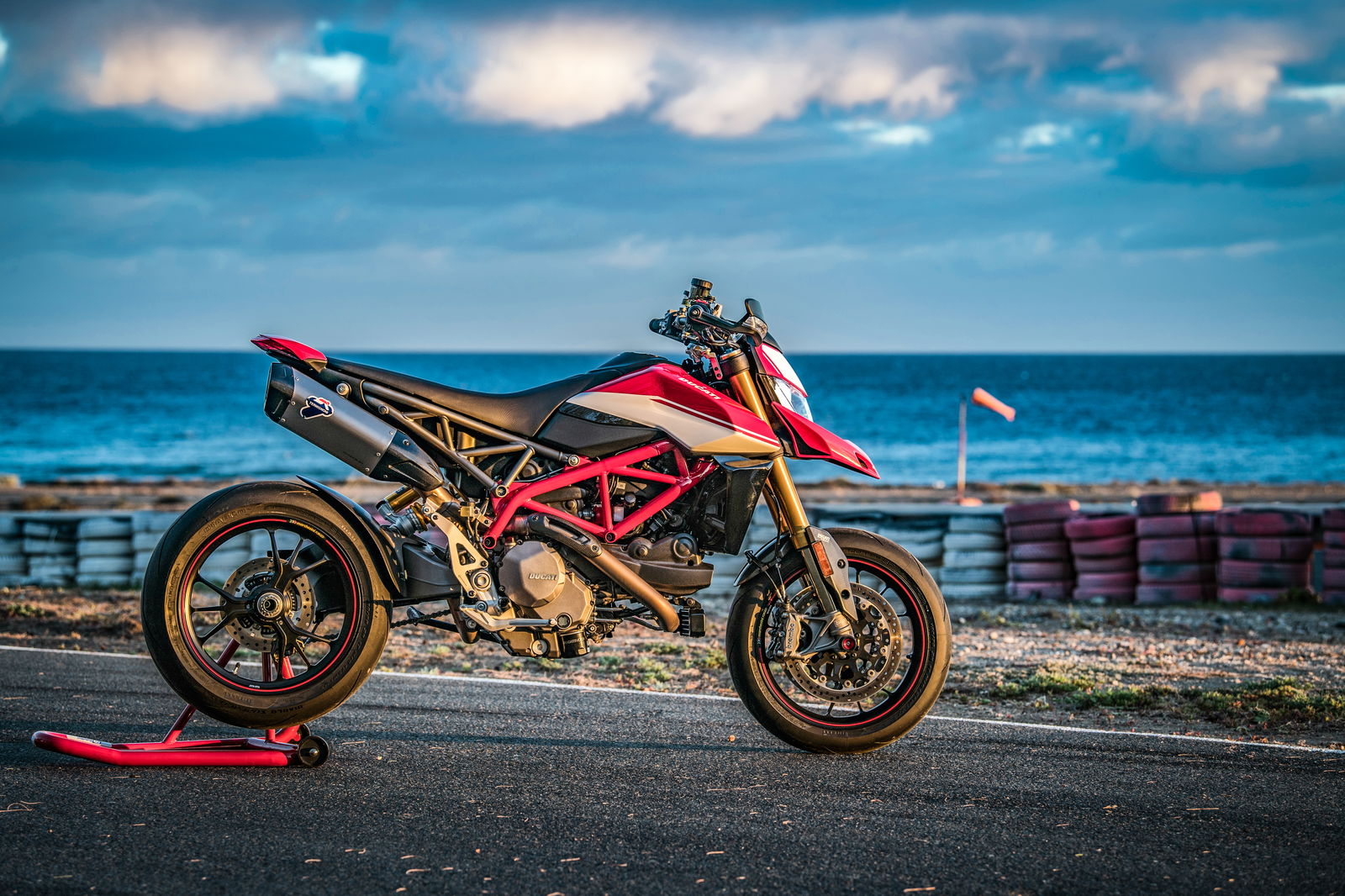
I’ve never been sure about it though. And after a day out on Ducati’s new Hypermotard 950 and 950 SP, I’m more convinced than ever that it’s proper nonsense. Because while this new bike is packed with all the high-techery you can eat, it’s also the wildest Hypermotard yet.
That’s a fairly high bar of course: the original 1100 Hypermotard was genuinely box-of-frogs mental, and while later versions, including the luggage-equipped Hyperstrada, tamed matters a little, the tall, skinny ‘motard has always been the ‘most likely to earn an ASBO’ member of the Ducati clan. The basic plan with the original bike in 2007 seemed to be ‘make a lighter Monster with long suspension’, but in the process, the engineers produced something much more special.
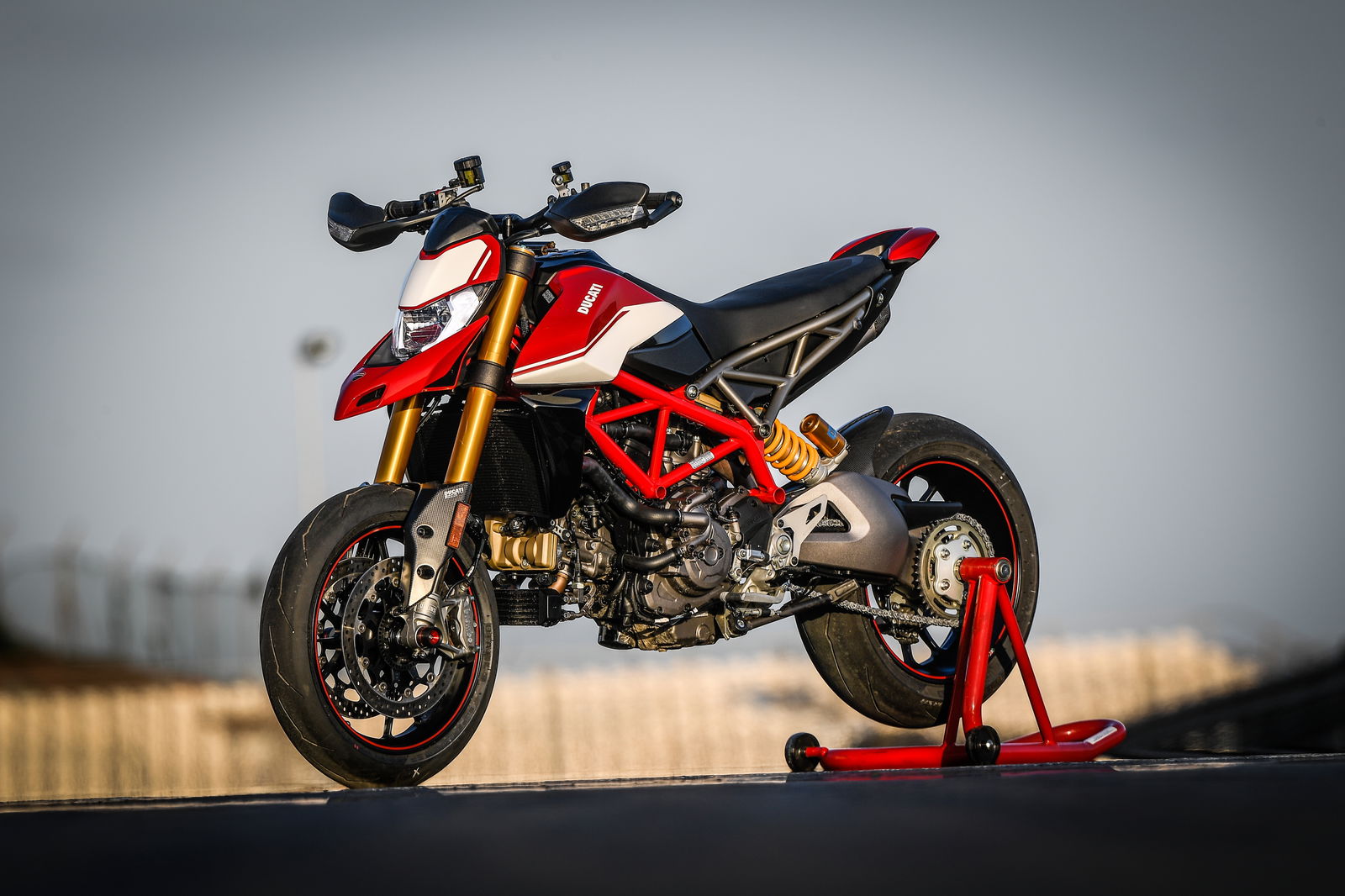
We’ve had a few versions since, as Ducati’s had to switch to more modern engines, ending with the Hypermotard 950 in front of us today, at the Circuit de Maspalomas in Gran Canaria. The name is as confusing as its predecessor – the 939 – since both use a 937cc engine. It’s the same engine as used in the Supersport, with a smidgen more compression and an extra bhp claimed over the Supersport version. Compared with the 939, the 950 has more compression, new pistons, exhaust cams, and magnesium cam covers – and it’s 1.5kg lighter too. Nice. Away from the engine, the frame is lighter and narrower than before, and lighter forks and brake discs help with an overall 4kg weight drop. Add that to the 4bhp power boost over the 939, and the six-axis IMU-based rider aids package, and you have a fairly hefty upgrade.
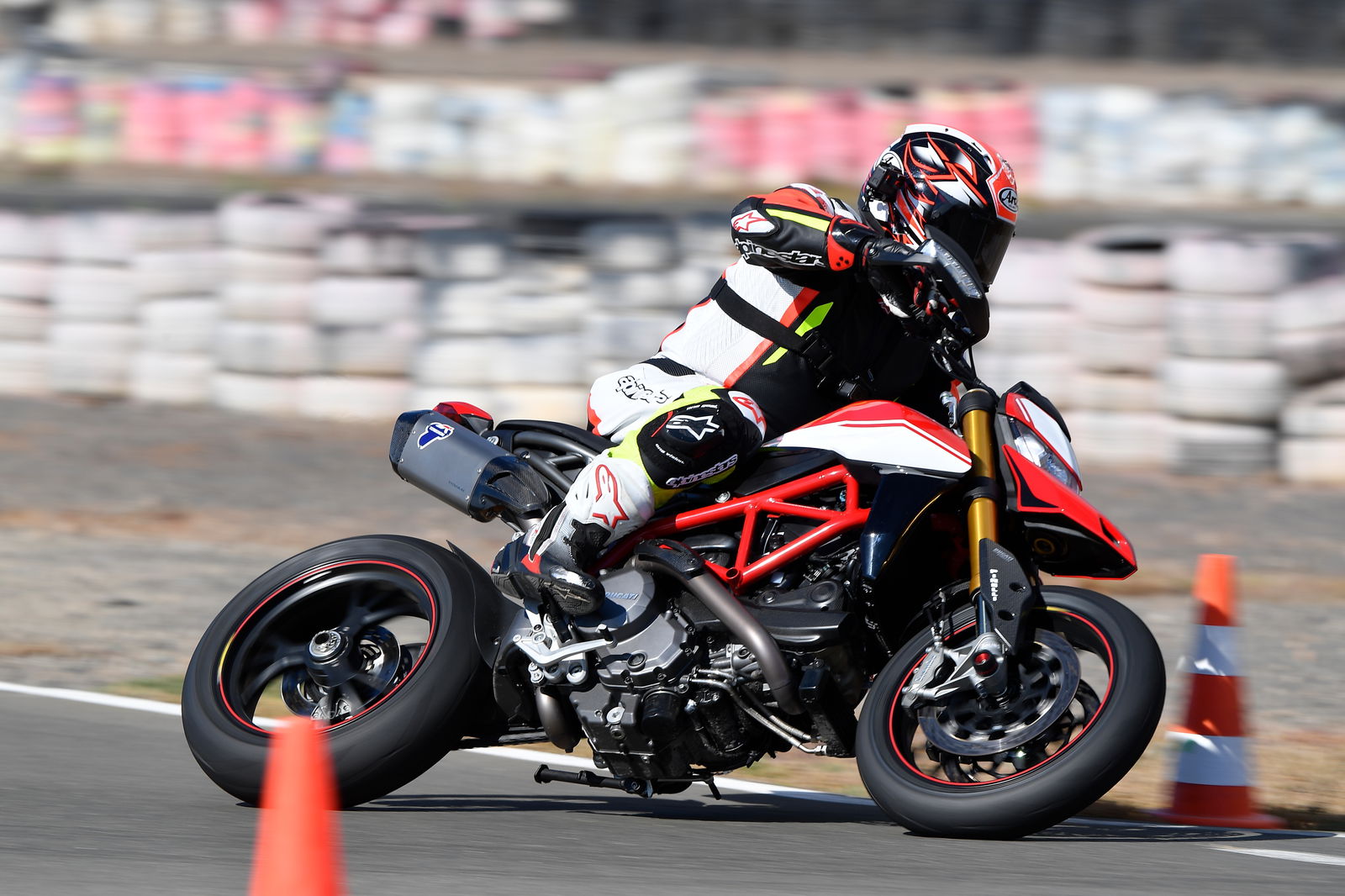
Our day has kicked off in the regular bike launch way – up, breakfast, kit sorted, and then jump on a bus to the track. Off the bus, into my new Alpinestars Tech-Air airbag leathers, and onto the rather tall, handsome SP version of the new 950. The SP is remarkably similar to the base bike in several important ways – the motor, power output, brakes, dash and extensive rider aids package are all the same. The difference is in suspension, wheels and tyres – full-beans Öhlins fork and shock, and forged aluminium Marchesini rims clad with Pirelli Super Corsa SP rubber. Add in the race paint job and some carbon fibre bits, and you get the posh version we’re riding this morning.

First impressions are of a very serious piece of work. The seat is pretty high, and I have to slip a bum cheek off the seat to get one tiptoe on the deck. The suspension feels pretty firm at a standstill, and it takes a bit of juggling to get the sidestand up, then we’re away. We’re only using half of the circuit – there’s no point trawling up and down the three long main straights, so mobile barriers and cones trace out a neat complex of bends. We’re led round for a couple of laps by an Audi TT RS sport-coupe, then off we pop to see how she goes.
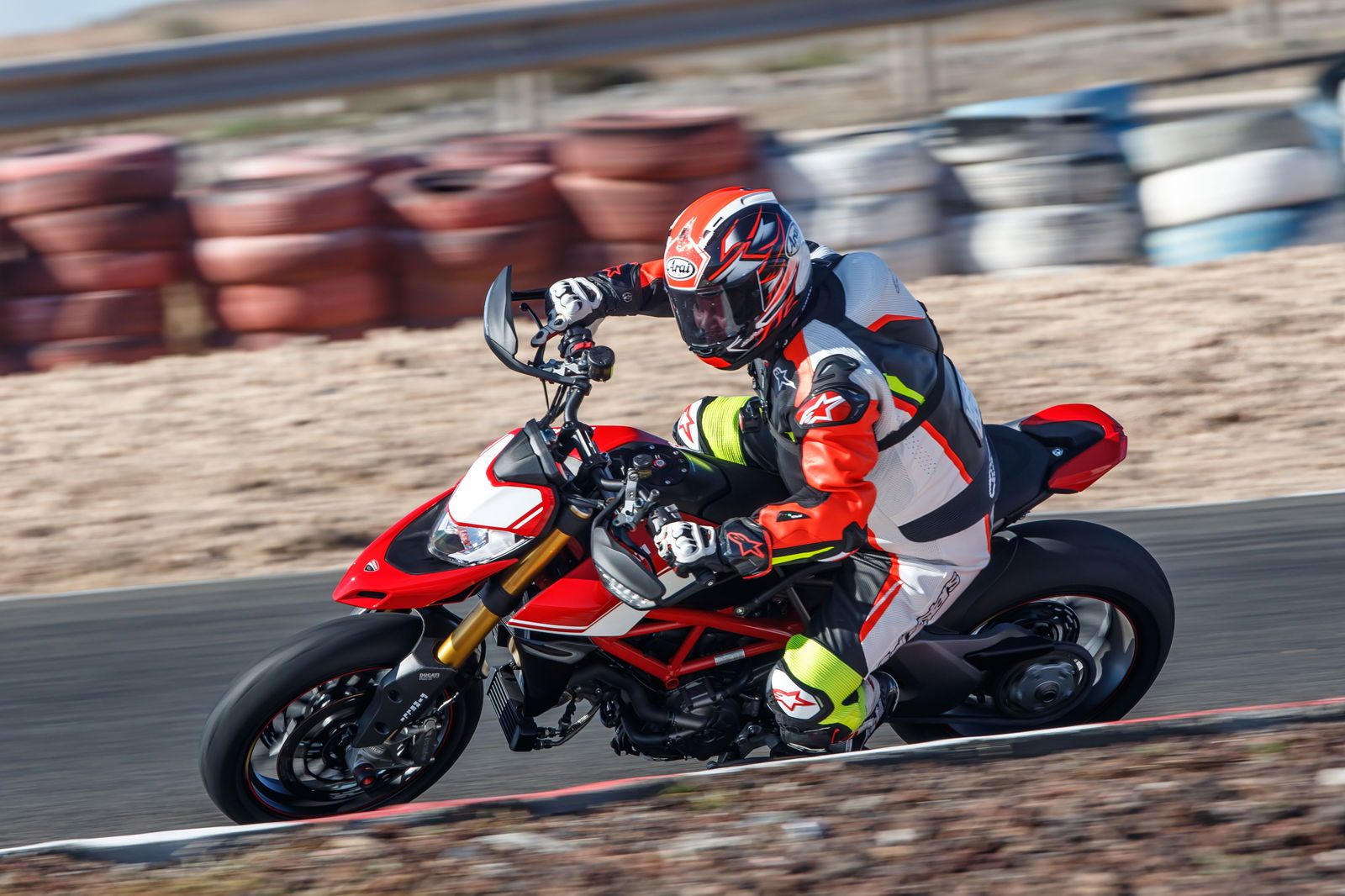
The first few laps are a little tentative as I find my way round the bike and the track. But there are a few signs of the madness ahead. The throttle response is sharp and instant, and even with the traction and wheelie control settings on conservative settings, the front wheel comes off the deck at the slightest provocation. The chassis is ace though – sometimes a high, skinny bike like this can feel a bit precarious in the twisties, but this is a proper treat when you throw it into a bend. The Supercorsas have oodles of grip, and with the warm Canarian asphalt getting hotter by the minute in the blazing sun, there’s no worries about either end letting go.

The short straights on the track mean there’s no real high-speed heavy braking, but I’m perfectly happy with how the Brembos are working, with plenty of power and feel on the way into a bend. The Öhlins suspension is also a treat, with the front end impressing in particular. It’s firm, composed, communicative, and not at all like a bouncy long-travel dirtbike setup, and together with the wide alloy bars, puts you right in command. It’s a piece of piss to get it right on its ear, until the pegs deck out, and scythe your way round, with peg, boot and knee all skrawping curved lines in the asphalt. There were a couple of chicanes in the layout we used, and these were pure joy on the SP, flicking from side to side, decking each peg and knee in turn, then powering out with the front wheel lifting over the red and white kerbstones…

The engine is a little deceptive initially. The torque curve is so flat that it wasn’t always clear where you are in the revs without having a look – there’s no peakiness or tailing off, just big chunks of grunt everywhere. There’s no need to rev it at all, yet if you want to hold a gear a bit longer, it goes and goes. I’m experimenting with first or second gear in the slower corners, and while second turns out to be the best plan, it’s so flexible you could probably use third with no grief. As the day went on, I got more used to the delivery, and it’s fair to say it strikes a fine balance between screaming top-end and beefy tractor-style grunt.
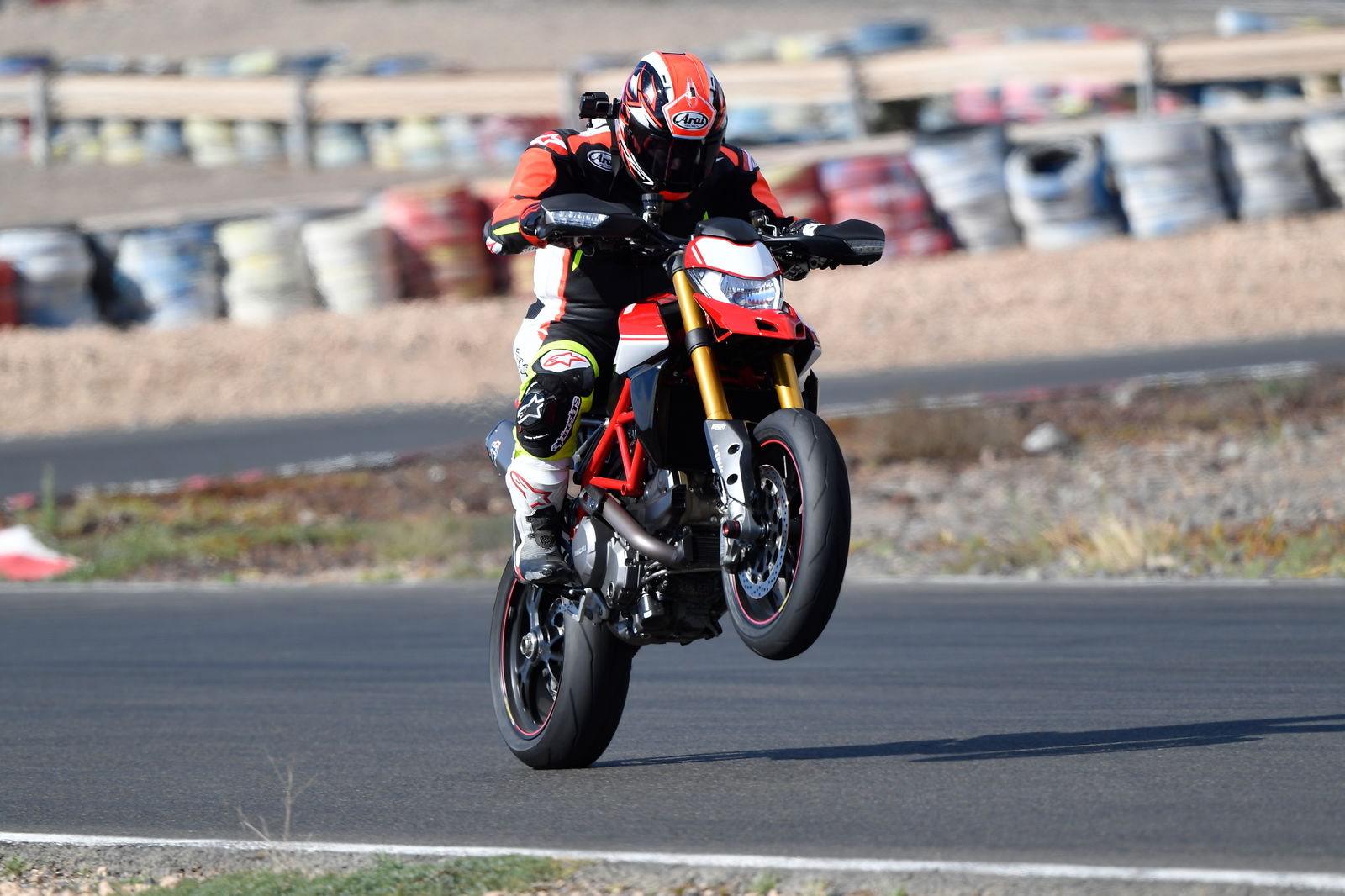
The gearbox and quickshifter on the SP are ace when you get it right – the auto-blipper in particular is a massive hoot, banging down the gears at the end of the mini-straights, and helped by the slick slipper clutch setup. The transmission’s not totally faultless though – I missed several changes during the day, on track and road (I wasn’t the only one), and the quickshifter also seemed a little over-eager at times. A few times my boot must have just caught the lever a little, giving the motor a wee hiccup. Tweaking the lever position to suit your foot size would be a good move (I have big old size 45 plates) – and I’d also imagine the gearchange might smooth out as the miles rack up: the launch bikes had only done a few hundred kilometres.

We only had three sessions on track – and the last one was perhaps the most fun I’ve had on a bike in years. I’d dialled right into the circuit layout, switched the wheelie control off, and turned the traction control down to ‘1’. I’d spent the earlier sessions trying to go as fast as I could, in the conventional track way, but this time, I was just having a laugh. With the wheelie control off, you need to be very careful – I almost flipped the bugger within a hundred yards of the pit exit. It feels like it needs a ‘0.5’ setting on the wheelie control – ‘1’ interferes a bit too much, yet ‘off’ is properly nuts. Unless you’re pretty confident at the horn monos, I’d recommend extreme caution when turning it off altogether…
NEXT: ROAD RIDE, VERDICT, TECH DETAILS, SPECS!!!

